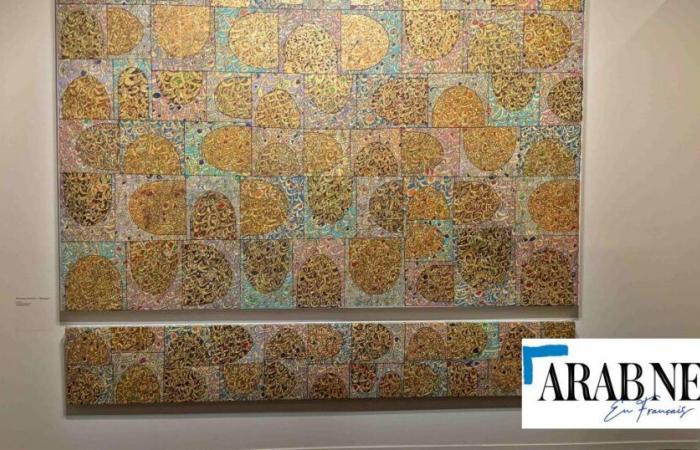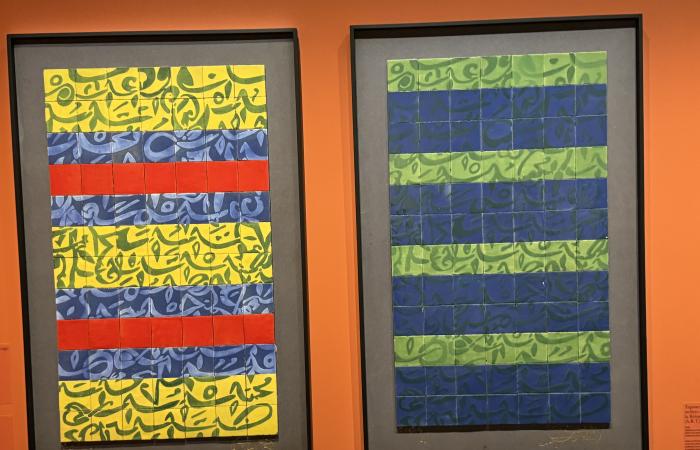Paris: While the Arab World Institute in Paris highlights the Arabic language in collaboration with the King Salman International Academy for the Arabic Language, it is Arabic writing and letters that are in the spotlight. honor through the retrospective of the works of the Franco-Moroccan artist Mehdi Qotbi exhibited at the institute until January 5.
It is a myriad of colorful freshness that welcomes the visitor to this exhibition and takes him into the joyful universe expressed by the works of this atypical artist.
Although he uses Arabic letters to compose his paintings, his work is the opposite of calligraphy.
His Art, according to his own definition, is rather “unwriting” and not a calligraphic alignment of words and sentences.
Under Qotbi’s brush, the letters swirl and dance to form a moving whole that captures the eye while remaining elusive.
This free and optimistic work, just like the person of Qotbi, draws its roots from the artist’s childhood, in this district of Takaddoum where he was born in Rabat into a modest family.
From childhood, Qotbi was immersed in a world of colors in the shadow of his upholsterer mother of whom he says “she could neither read nor write, she had no culture. But she had the ability to merge colors, “she knew how to combine them. For me they were dream moments.”
It is perhaps these moments with the emotions that accompany them that Qotbi attempts to reproduce in his work which is exhibited at the Georges Pompidou Museum in Paris as well as at the Museum of Modern Art, elsewhere also at the National Gallery of Fine Arts in Amman or Houston as part of the Menil Collection.
However at the age of twelve, Qotbi believed he was destined for a military career, he seized the opportunity of a military parade and approached the Minister of Defense at the time Mahjoubi Ahetdane who helped him integrate the Kenitra military high school.
Very quickly, his penchant for drawing took precedence over his penchant for handling weapons, and he subsequently joined the school of fine arts in Rabat.
His meeting with the great Moroccan artist Jilali Gharbaouie ended up sealing his destiny, he devoted himself to his artistic vocation which subsequently led him to the Beaux Arts in Paris, from which he graduated.
Alongside his career as an artist, Qotbi strives to transmit his passion to young people and teaches visual arts in high schools in Paris and Auxerre.
A tireless worker, he published artists’ books in collaboration with great writers and poets including the Syrian Adonis, the Lebanese Andrée Chédid, the French Nathalie Sarraute and also the Czech Vaclav Havel and the Senegalese Léopold Sedar Senghor.
Academic and art critic Philippe Dagen describes Qotbi’s work as “a constant and disconcerting relationship between painting and writing” and states that this work “offers and eludes critical interpretation. She allows herself to be admired and does not allow herself to be captured.”
His notoriety opens the doors to the highest cultural and political spheres both in France and in Morocco, and Qotbi uses this to strengthen the links between his native country and his adopted country.
He found himself responsible for creating a “Franco-Moroccan friendship circle” which was nourished by his large network of contacts both in Morocco and in France.
The whole of artistic and political Paris was invited to the inauguration of his retrospective, and of course, the wife of the French president Brigitte Macron was among the first to be present.







